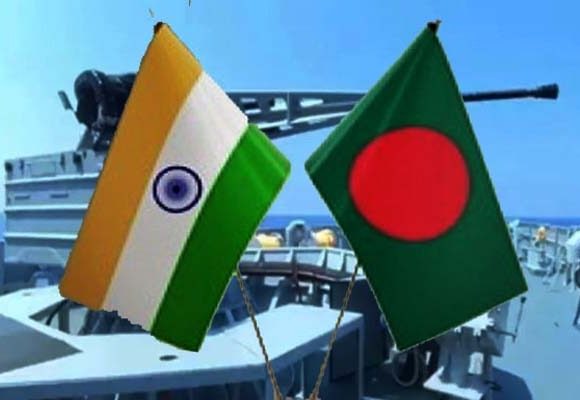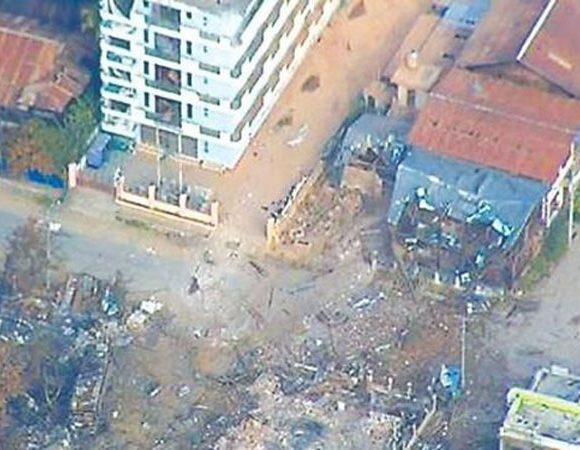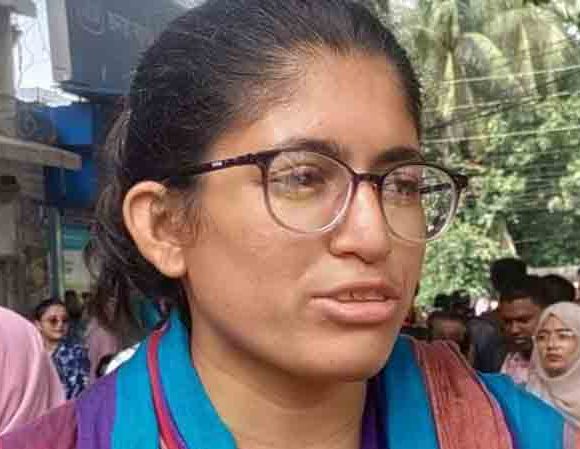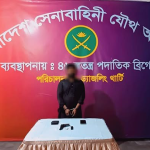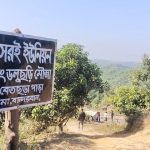ANALYSIS: Rohingya look on Arakan Army as saviours in fight with Myanmar’s junta
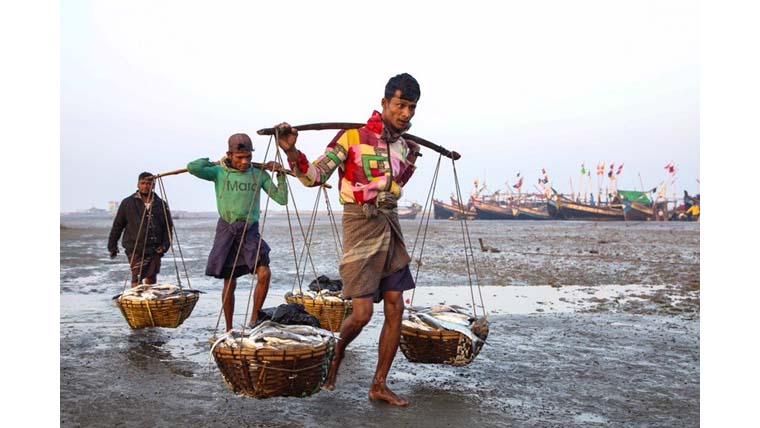
NEWS DESK
Civilian casualties have been reported in renewed fighting between Myanmar’s junta troops and the Arakan Army (AA) in Rakhine State.
Fierce fighting has taken place in Maungdaw, Buthidaung and Rathedaung townships, known as Mayu region in western Rakhine and neighboring Paletwa Township in Chin State since early August.
More than 10,000 people have been displaced by fighting with several civilians killed by junta shelling. Ethnic Rakhine residents make up most of the victims but Rohingya Muslims have also been killed.
A seven-year-old Rohingya was killed and two others injured by junta mortars at Thabeik Taung village in Buthidaung on September 23.
The village is divided between Rakhine in the south and Rohingyas in the north.
The Rohingyas’ plight
Rohingyas who want to live peacefully are being targeted, said a Rohingya community representative in Buthidaung.
“Though the junta is fighting the AA, we, the Rohingyas, are always targeted. Since the fresh fighting broke out, we have suffered a lot of restrictions,” he said.
Troops pressure Rohingya villages to shun the AA but also arrest them on suspicion of having ties with the armed group and abduct them for ransom, said Rohingya villagers in Buthidaung.
In August, a Sin Thel Pyin villager had to pay 1 million kyats to junta soldiers in compensation after his two bulls stepped on two regime landmines.
“When we went to get the dead cattle, soldiers refused to give them back. They told me to pay 500,000 kyats per mine. When villagers are taken by soldiers for interrogation, they are never released unless money is paid,” said a Sin Thel Pyin villager on condition of anonymity.
Rakhine is one of the poorest states in Myanmar where jobs are extremely scarce. Amid the post-coup economic turmoil, young people are leaving war-torn Rakhine to work overseas.
But the Rohingya lack identity cards and cannot leave the state legally.
They hide in box trucks or cross the sea in crowded vessels with large numbers dying or being arrested in the process.
Trafficking
Almost everyone detained in a boat in the Bay of Bengal is a Rohingya from Rakhine.
They are normally charged and imprisoned for violating immigration laws and deported back to Rakhine.
Despite arrests and imprisonment, young Rohingyas’ sea crossings continue all year round.
On May 22 fishermen from Shwe Thaung Yan village in Ayeyarwaddy Region found 17 dead Rohingyas washed ashore near their village who died in a storm. Six young Rohingya women were among the dead.
More than 30 people drifting in the sea were rescued by fishing trawlers.
They were from Buthidaung Township and heading to Malaysia to work, according to the Muslim community.
The regime has not commented on the incident. The Rohingya community said there were at least 60 people on the vessel and some 30 people were rescued.
Malaysia is the most popular destination although few avoid the authorities and traffickers.
Rohingya casualties
More than 200,000 people were displaced in two years of fighting between Myanmar’s military and the AA from late 2018 to November 2020. Approximately 342 civilians were killed and 740 others were injured, according to media reports.
At least 21 Rohingyas from Buthidaung, Kyauktaw, Mrauk-U and Minbya townships died and approximately 50 others injured in the fighting, according to The Irrawaddy’s reports.
Rohingyas want to live peacefully with other ethnicities in Rakhine, said Rohingya writer U Aung Khin from Sittwe, who was once jailed for publishing a Rohingya calendar.
“We hope to live and make a living peacefully. That’s all. We only hope to be recognized as citizens and have human rights,” said U Aung Khin.
Rohingyas pinned high hopes on the now-ousted National League for Democracy government that it would end persecution but nothing positive happened, said members of the Muslim community.
However, the AA has been able to restore trust between Rakhine and Muslim communities and they can now freely travel to different villages after years of segregation.
U Aung Khin said he trusts the AA because it has so far honored its promises, treating Rohingyas equally and empowering them to join its administrative body.
“We are no longer referred to as Bengalis by the Rakhine people. Rakhine people now refer to us as Muslims. Previously we were branded as Bengali interlopers. But there is social harmony between the communities and we can coexist peacefully. So we Muslims view the AA as a savior,” said U Aung Khin.
Armed Rohingya groups
More than 200 people were killed in communal violence in 2012 in Rakhine. Hundreds of thousands of people were left homeless by arson attacks. Many Rohingya villages were razed in the military’s so-called counter-insurgency operations in 2017 after the Maungdaw incident and hundreds of thousands of refugees crossed the border into Bangladesh.
Various investigation committees and commissions have been established regarding the Rohingyas between 2012 and 2017. But they have not been repatriated and rehabilitated and Myanmar is facing genocide charges at the International Court of Justice.
At least three Rohingya armed groups, including the Arakan Rohingya Salvation Army (ARSA), Rohingya Solidarity Organization (RSO) and the Arakan Rohingya Army are reportedly operating along the Bangladesh border and infiltrating Maungdaw. There is also a group led by Abdul Hakim which is more like a criminal gang with reports of kidnappings for ransom.
The RSO was established in the early 1980s and has frequently attacked security outposts in Maungdaw Township on the border, according to historical records.
In June last year, a man claiming to be Major Kyaw Myint Tun from the RSO, clad in uniform and with a holstered pistol, shared a video on social media in which he said in Burmese that the armed group would fight the regime for Rohingya rights. The video also shows RSO fighters undergoing training.
ARSA came into the spotlight following its reported attacks on border guard outposts in Maungdaw in 2016 and 2017.
It said it was fighting for Rohingya rights but the killing of Hindus brought its motives into question. Its popularity with Rohingya has subsequently declined.
Can the AA resolve the Rohingya issue?
Rather than policies from Naypyitaw, the Rakhine people’s opinions will be more important in resolving the Rohingya issue. With the AA having consolidated its control in much of Rakhine since the unofficial ceasefire in 2020, its political wing the United League of Arakan (ULA) has started to handle the Rohingya issue.
As the junta administration has collapsed in northern Rakhine, Rakhine and Muslim villages are now turning to ULA courts. And Rohingya people are working in the AA’s administration and its police force.
A Rohingya villager from Buthidaung Township, who asked for anonymity, urged the AA not to make nepotistic appointments to administrative bodies in Rohingya villages but appoint people with majority support.
“Suppose we have a problem at our village, we can’t complain directly to the AA. We can’t complain unless the village administrative body appointed by the AA writes us a referral letter. The village administrative body writes the letter only when we pay money. This is no different from the junta’s administration. The AA should appoint village administrators with majority-backing,” he said.
At an AA press conference in September, spokesman Khaing Thukha called on Bangladesh and the international community to recognize the ULA and AA as the legitimate authority in Rakhine and start repatriation of Rohingya refugees from Bangladesh.
“It is a critical issue and it is difficult for a revolutionary government to handle it. If we are to resolve this issue, Bangladesh and the international community must recognize us. We will start repatriations when we can officially talk to them,” the AA spokesman told The Irrawaddy.
Ko Khin Maung Thein taking shelter at Kutupalong refugee camp in Bangladesh said the regime is lying when it repeatedly talks about the repatriation of Rohingya. But the AA has not taken any constructive steps to resolve the Rohingya issue, he added.
“It will not be different for us no matter which side wins the fighting. But the AA is fighting for liberation and I want the liberator to win,” said Ko Khin Maung Thein.
A Rakhine politician from Maungdaw said Rohingya villagers are currently neutral on fighting between the regime and AA but this may change.
Prominent Rohingya activist Ro Nay San Lwin said it is wrong to think that Rohingyas are spectators.
“Rohingyas are not an audience. Clashes happen near Rohingya villages and we live in constant fear,” Ro Nay San Lwin said.
Source: The Irrawaddy

